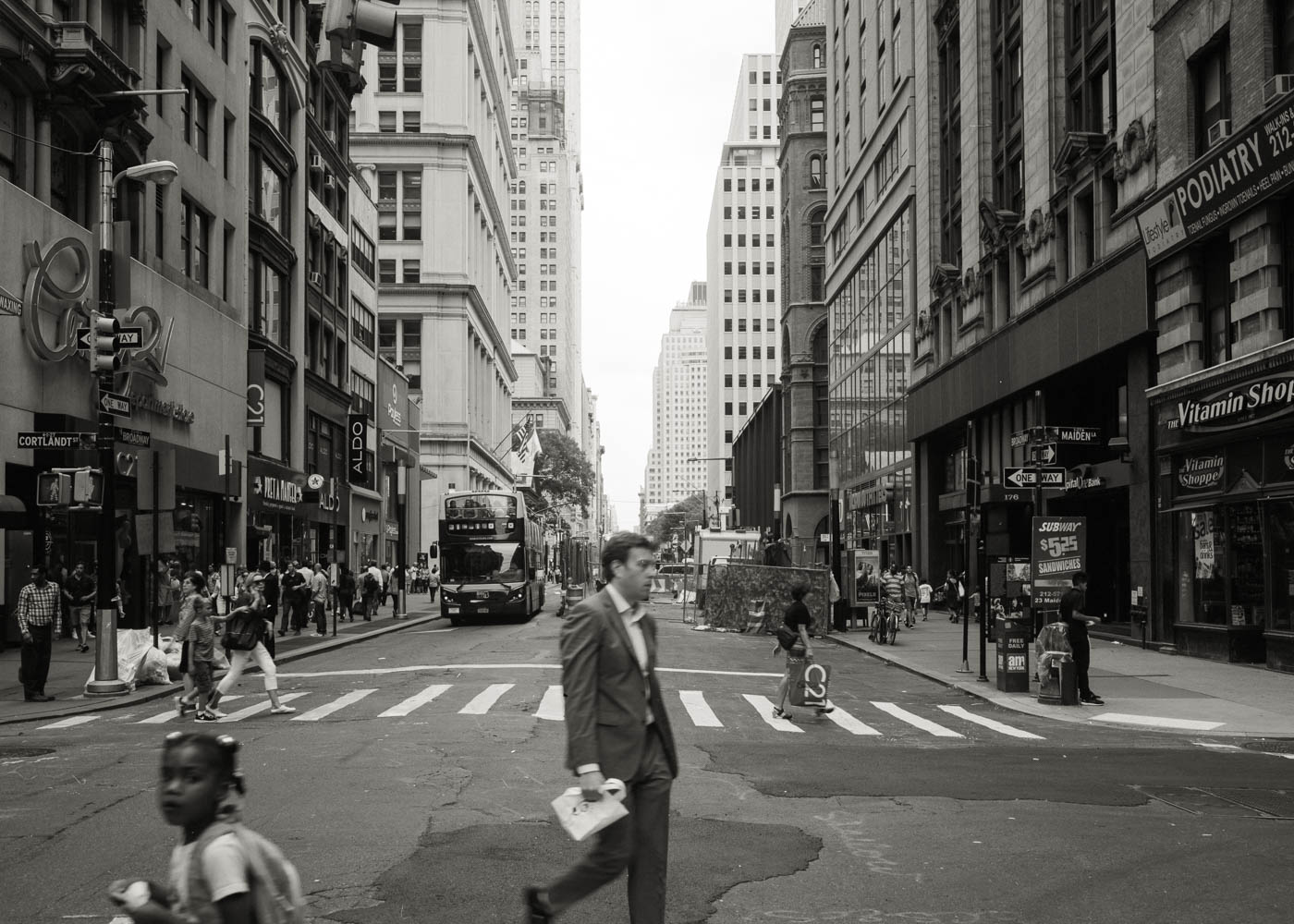August Sander, Eugène Atget, Bernd and Hilla Becher, Thomas Struth.
There is always the problem of influence in art, and one way of working it out is to deliberately attempt to copy what has come before. When I was a teenager I played the albums of Charlie Parker, Cannonball Adderley and others over and over, repeatedly dropping the needle on the beginning of the solo and attempting to copy what I heard on the headphones. Budding soloists still do the same thing, however the internet has furnished them with dead-note-accurate transcriptions and half-speed remasters of all the great solos, so copyists have a huge head start.
Thomas Struth made his images in 1978 under the influence of the Becher’s, taking their unadorned elevation views and creating a conversation between each side of the street He called the series “Unconscious Places” and continues to work on it to this day. In my view he was looking for the essence of the city, the vernacular language of the streetscape. He was not to my mind interested in historical documentation as Berenice Abbott had done in the Thirties, this was not “Changing New York”. By the late 70’s New York was at its nadir, bankrupt and deserted. For an German artist staying in Soho in the winter of 1978 to venture out onto Crosby Street must have been like stepping out of a helicopter in Afghanistan. To the modern eye it might look like trendy “ruin porn” but this was well before that genre was commonplace. They are more like a portrait than a landscape.
There is always the problem of influence in art, and one way of working it out is to deliberately attempt to copy what has come before. When I was a teenager I played the albums of Charlie Parker, Cannonball Adderley and others over and over, repeatedly dropping the needle on the beginning of the solo and attempting to copy what I heard on the headphones. Budding soloists still do the same thing, however the internet has furnished them with dead-note-accurate transcriptions and half-speed remasters of all the great solos, so copyists have a huge head start.
Thomas Struth made his images in 1978 under the influence of the Becher’s, taking their unadorned elevation views and creating a conversation between each side of the street He called the series “Unconscious Places” and continues to work on it to this day. In my view he was looking for the essence of the city, the vernacular language of the streetscape. He was not to my mind interested in historical documentation as Berenice Abbott had done in the Thirties, this was not “Changing New York”. By the late 70’s New York was at its nadir, bankrupt and deserted. For an German artist staying in Soho in the winter of 1978 to venture out onto Crosby Street must have been like stepping out of a helicopter in Afghanistan. To the modern eye it might look like trendy “ruin porn” but this was well before that genre was commonplace. They are more like a portrait than a landscape.
I tasked myself with revisiting these locations not to see what had changed, but to see if I saw what he saw in these unconscious places. For me, and this is the part about working out influences, it became readily apparent that while you could copy the style and form, you could not make the pictures anew. The best you could do was wink at the former. Quite unexpectedly the best images (Alternates and New images) came about by not really trying to emulate but by responding to what was actually happening. New York in 2015 on a Sunday morning is far from abandoned. In the summer you could get up at 5 and be working at 6am which is when many of these images are made, but in winter, when Struth was working, in the shorter days, by the time the light was up sufficiently, the entire city was up. The city is now fully conscious at all hours. The silent mystery he observed, the hint of possibility, has now unfolded and we see what the city has become.
The very last image was a test image near my studio in Gowanus, and I include it because it has the same latent feelings that Struth captured in 1978. I don’t believe it is accidental that I was drawn to that view.
The very last image was a test image near my studio in Gowanus, and I include it because it has the same latent feelings that Struth captured in 1978. I don’t believe it is accidental that I was drawn to that view.


























